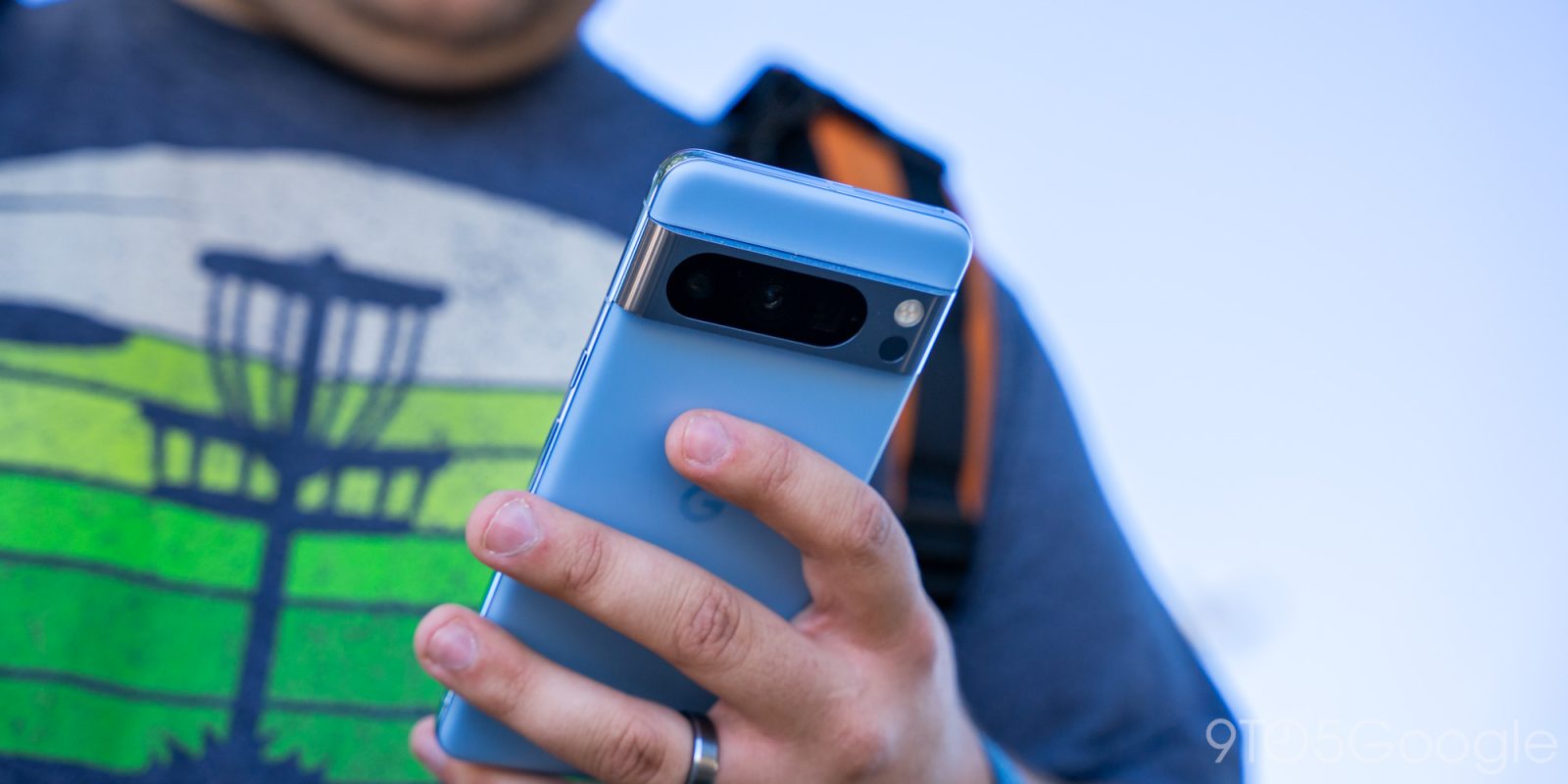
Google has been making its own smartphones since 2016, but it’s really never felt as though the company has really hit the nail on the head. Each model has had some random dealbreaker or quirk that left it just short of really getting it all right. After the Pixel 7 Pro showed that Google was finally pointing itself in the right direction, the Pixel 8 Pro feels like it is the device that brings everything together.
Table of contents
Hardware & display
This feels like a Google phone
Every brand has its own key voice that you feel throughout, and for Google, it’s felt like that vision diminished in the past few years, at least on the hardware and aesthetic level. Where the pre-Tensor Pixel era culminated in the Pixel 4 series, which felt like the ultimate in Google design with its high-contrast colors and quirky design choices, the Pixel 6 and Pixel 7 both felt a little more generic.
With the Pixel 8 Pro, as well as the smaller Pixel 8, Google feels like it is finally letting itself be different.
This starts with the delightful rounded design of these phones. The four corners are less boxy compared to the previous two generations and have bezels that perfectly (at least to my eyes) match those curved corners. The metal rails, which are unfortunately still polished, meld into the camera bar that wraps around to the other side of the phone. It’s a great look, and the “camera bar” is a design that, three years in, is really standing the test of time when it comes to keeping an iconic look despite some big hardware changes.

On the Pixel 8 Pro, Google also steps back into a design trait where, back in 2018, the company was ahead of the curve. The Pixel 3 and Pixel 4 were glass phones with a matte finish, but the Pixel 6 and Pixel 7 both ignored that and went glossy, just in time for literally every other brand to go all-in on matte finishes. The Pixel 8 Pro revives a matte finish, and it’s just delightful. The soft back doesn’t feel as nice as it did on the Pixel 4 (mainly due to the lack of matte side rails), but it feels wonderful in the hand and grippier than some other matte finishes I’ve used.
And, in the color department, Google has something for everyone this year. There is, of course, the typical black, called “Obsidian.” This variant is clean, easy on the eyes, and less boring thanks to the matte textures. “Porcelain” is an off-white and a top pick in my eyes. But the signature “Bay” is a wonderful, if slightly polarizing, blue. The light shade looks great, especially in less intense lighting and really sticks out in a world that is otherwise full of pastels (Apple’s “blue” on the iPhone 15 is literally just white). But, some folks don’t seem to like it, and I think it just boils down to personal preference.
I’m a huge fan of the blue here, but if you’re not, the black and white colors are equally great this time around.

This is the best display in a smartphone (at least here)
The other big new hardware change on the Pixel 8 Pro is the new “Super Actua” display. Google’s branding for the LTPO AMOLED display is meant to stand out, and I think it genuinely does. The display tops out at a massive 2,400 nits, which beats every other smartphone sold in the US market. It’s a wild change for Google, which has, in years past, tended to shy away from beating out the competition on specs.
Of course, like any other very bright display, you’ll only see that peak when viewing HDR content. This happens when viewing pictures taken by the Pixel 8 Pro through Google Photos, for instance, with the app taking advantage of Android 14’s Ultra HDR support. This leads to the occasional jarringly-bright image on the display, but Google’s implementation feels less aggressive compared to the iPhone 15 Pro I used recently. You won’t really see this used in a lot of places outside of Google Photos, though. Netflix uses it on select content, and it looks great, as Max Weinbach tells me. I think that I also saw HDR active on a couple of Reels on Instagram, but it was definitely showing less frequently than on the iPhone.
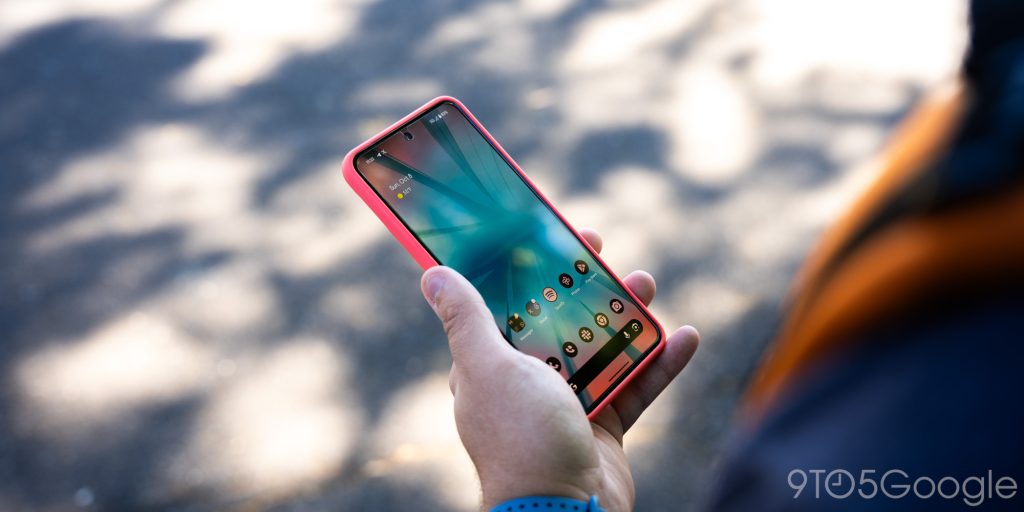
“Super Actua” also tops out at 120 Hz but can move between 1 Hz and 120 Hz as needed. I still don’t feel like Android takes full advantage of this, but in day-to-day use, all you’ll see is a smooth display.
The panel’s overall quality is also quite stunning beyond its brightness. Colors are vibrant but not oversaturated, and this display feels sharper than past Pixels. Where the Pixel 6 Pro and Pixel 7 Pro both almost felt like there was more space between the glass and the actual display panel, the Pixel 8 Pro feels more like “paper.” For lack of a better comparison, it feels on par with the iPhone or a Galaxy S23 series device and is the first Pixel I’ve felt has managed that feeling since the Pixel 4/XL.
Genuinely, I’d argue that this is the best display you can get in a smartphone in North America today, both in terms of its raw specs and how it performs in real life. You can do better internationally, but right here, right now, this is as good as it gets in the US market.
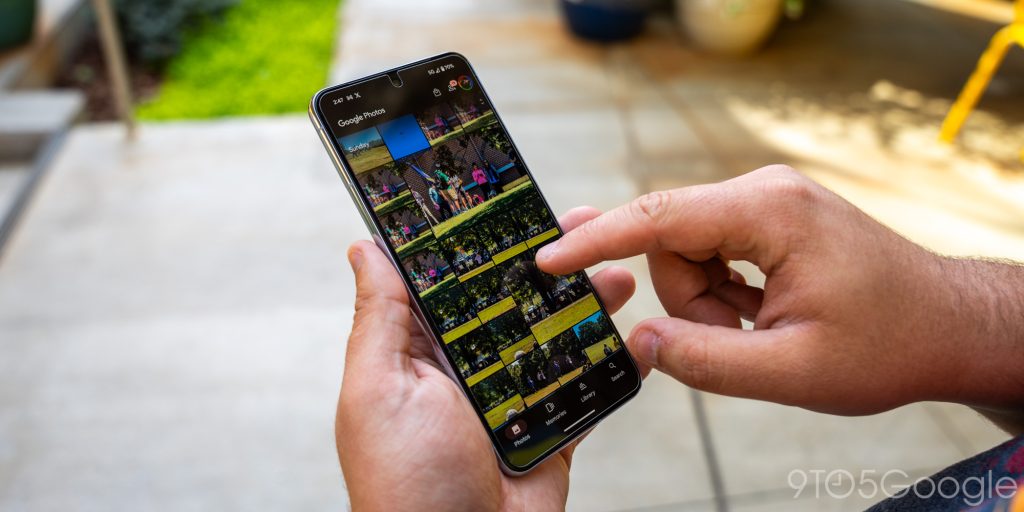
The 6.7-inch size of the Pixel 8 Pro feels familiar compared to the Pixel 7 Pro and 6 Pro and very much fits with the rest of the flagship smartphone space. But, as more and more time on foldables has shown me, I also really love using smaller smartphone displays. The Pixel 8 seems like the obvious answer there, but I do feel that Google has struck a decent balance on its Pro device. It’s not so unwieldy that I don’t want to use it (which happened with Galaxy S23 Ultra over time) but also not so small that I feel like it’s not big enough.
It’s a flat display, finally
While the quality of Google’s panel really speaks for itself in person, an even more practical benefit this year is to the display’s hardware. Not only are the bezels smaller and symmetrical, but Google has finally ditched the stupid curved glass trend and has a flat display in place on the Pixel 8 Pro.
Of course, like many devices, the glass isn’t totally flat, with a very slight curve on the very edges of the screen. But this, importantly, doesn’t impact screen protectors or anything else. It’s purely an ergonomic choice, as the curve feels a little nicer under the finger.

That said, I immediately slapped a screen protector on this device. It cost me $10, and I did it out of pure principle for the literal hundreds of dollars I’ve spent trying to keep a good screen protector on Pixel 6 Pro and Pixel 7 Pro.
Curved screens are dumb.
Software & performance
Android 14 is a great update, treated as a vehicle for Google AI
Android is a very mature operating system, so I’ve largely not expected much from its yearly updates for a while now. That said, the Android 14 update feels like one that’s actually rather good. My favorite change year-over-year is to the lockscreen, which I can now customize with more clock faces. It’s not nearly approaching the flexibility that iOS currently offers in this area, but I think that’s in part because the lockscreen serves two entirely different purposes across Android and iOS.
The rest of Android 14 is less impactful but just welcome on the whole. I like that the new back gesture is more visually apparent, that the system share menu has become more capable and, in turn, more widely used by apps, and that I can now have the system automatically unlock when I enter my PIN (as long as it’s six digits long). I also love that my little notification shade shortcut to open the clock app (by tapping the time), has finally returned.
We’ve got a full breakdown of what’s new in Android 14 over on YouTube. Overall, though, I think the update really just boils down to a lot of quality-of-life changes that make for a more polished Android experience, and I’m all here for it.
On Pixel, though, Android 14 really just acts as the delivery method for a heaping helping of Google AI.
That includes existing applications of this, like Google Assistant. While many long-time Android users have started to feel like Google Assistant is losing its touch, it’s easy to forget that, if you’re coming from an iPhone and Siri, Google Assistant is actually incredibly accurate and intelligent, and AI is just making it even more useful.
A good example of this is the “Summarize” feature in Google Assistant. This feature, with the help of Chrome, can create a bulleted summary of a webpage. It’s a neat little trick that in theory can save time, but I don’t trust it enough to use it on anything remotely important. The feature gets most things right but can occasionally get little details wrong, or just be missing really important context.
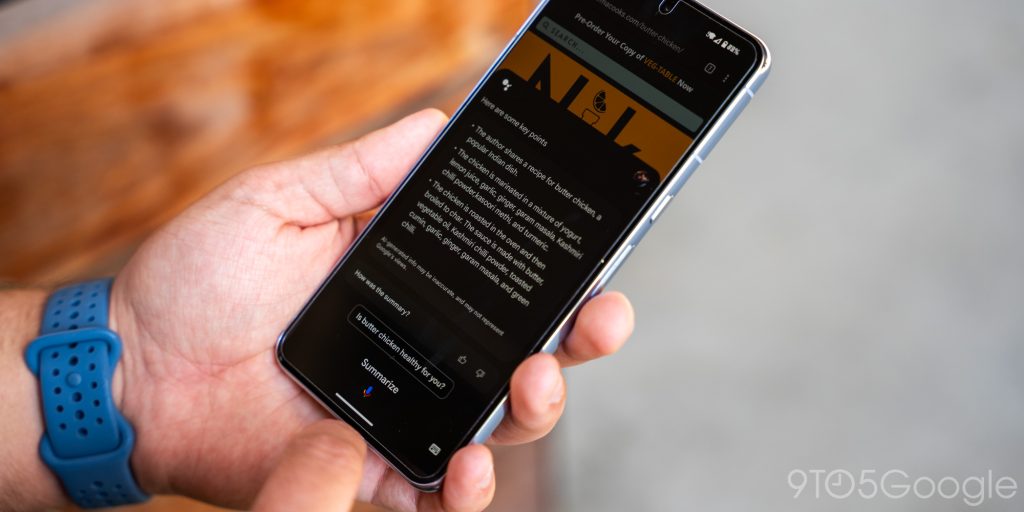
The one thing I really want the feature to do is summarize a recipe thanks to the annoying trend of appending a novel to every recipe for butter chicken. But, really, “Summarize” is just not good at this. Some pages don’t work at all, and the ones that do give me a summary that’s of minimal help. For instance, on a butter chicken recipe, the summary tells me a few ingredients and how the chicken is cooked, but what I’d actually want to know here is what ingredients are used and what cooking tools I’d need.
“Summarize” is a genuinely great idea in theory, but right now, I don’t think we’re quite there. An AI specific to the topic at hand will likely be better at generating these summaries, because it can change to better suit the specific needs. And, while I’m certainly biased, I think a good source that you can trust is still a far better way to get information than using AI when it comes to news.
Another feature I’ve quite enjoyed is AI wallpapers. Using generative AI, you can now create custom wallpapers directly from the Pixel Launcher, and it’s low-key my favorite use of generative AI to date. Google’s wallpaper generator isn’t as limitless as something like ChatGPT or Bard on the text side, or Dall-E or Midjourney on the image side, but it gives you some preset styles, patterns, and ideas that you can choose from to create a unique look for your wallpaper. It works fairly quickly, and the results are consistently pretty stellar. I think that’s the advantage to having some restrictions – you can’t really screw this up.
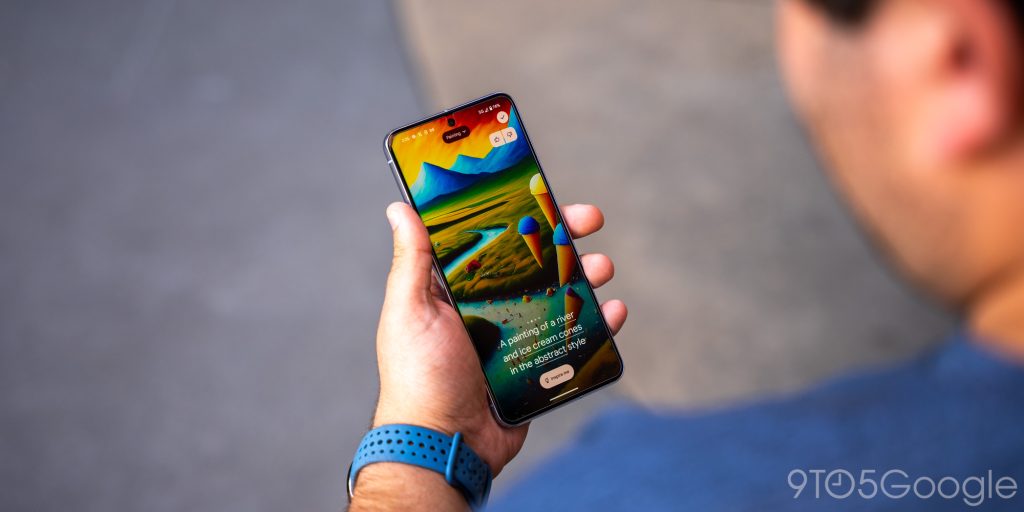
And really, this is just scratching the surface. We’ll get into the camera stuff later, but Google also has way more features coming over the next few months, including the arrival of Bard in the Google Assistant.
Tensor G3 seems good, but only time will tell
What has really been the make or break point for Pixel phones since the Tensor reboot of 2021 has been that chip, Google Tensor. The customized chip had a strong foundation, but it’s become very clear that its first two generations were not really up to par. Heat issues were by far the biggest problem, but poor modem performance has also been a problem, as has a bit of a deficit when it comes to more GPU-intensive applications, such as games.
Tensor G3, though, really steps it up on a hardware level.
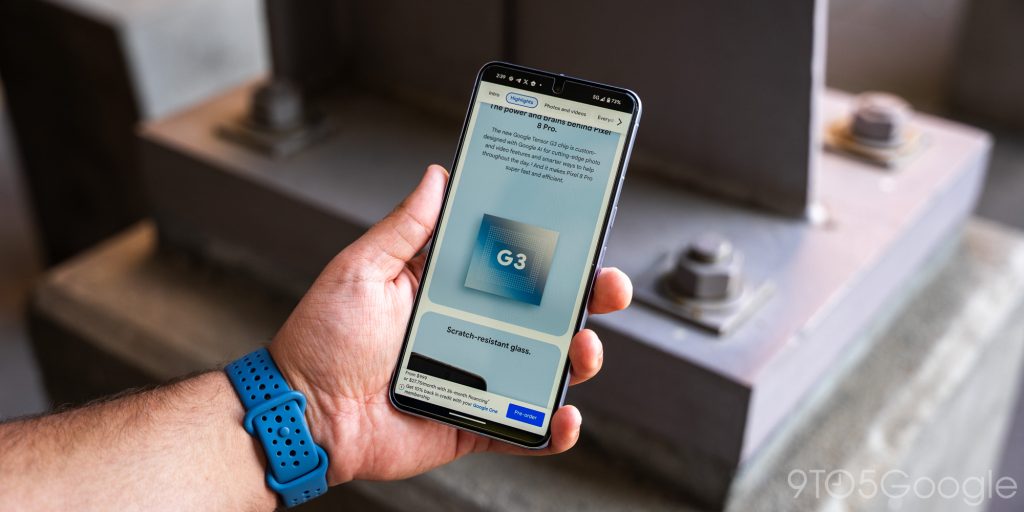
The new chip is based on a 4 nm process and has hardware that’s comparable to the Snapdragon 8 Gen 2, at least on paper. At the helm is a Cortex-X3 core, backed up by eight other cores – four Cortex-A715 cores and four Cortex-A510 cores. While these cores from Arm are just a few months from being a generation behind, they’re a massive step up (especially on the power-efficient cores) compared to Tensor and Tensor G2.
But, how does this hold up in actual use?
Thankfully, things are looking bright in the first few days I’ve been using the Pixel 8 Pro. In normal use, the phone doesn’t get hot, which is a big step up from the past couple of years. My Pixel Fold especially showed just how insanely hot Tensor could get – I literally can’t recommend the phone as a result. But the Pixel 8 Pro feels more on par with everything else I’ve used this year. It gets a little warm from time to time, just like the Galaxy S23 Ultra, Flip 5, OnePlus 11, and iPhone 15 Pro have, but only when the situation made reasonable sense. For instance, playing a few matches in Rocket League Sideswipe left the phone feeling a little warm but not to the same extent as on previous Tensor-powered Pixels. And other casual games I’ve tried have been roughly the same. However, at the same time, other reviewers I’ve spoken to have seen random issues with heat in other games, so your results may vary.
Overall, though, thermals on Pixel 8 Pro and Google Tensor G3 seem to be a considerable improvement.
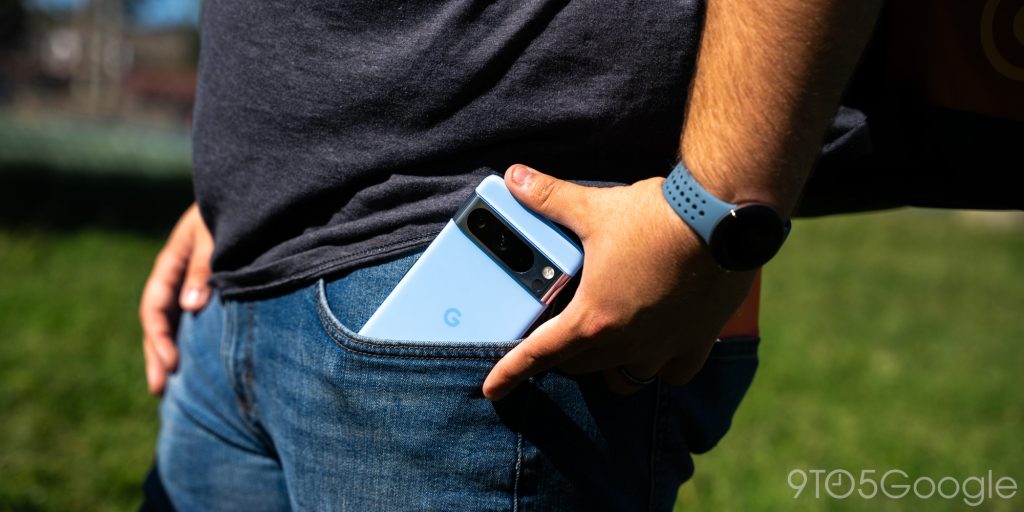
I think perhaps the biggest testament to that, for me at least, has been in wireless charging while under load. I had the Pixel 8 Pro in my car on a wireless charger while running wireless Android Auto for almost two hours, and it didn’t break a sweat. My Pixel 7 Pro in that same use once had me legitimately worried it might shut down due to the heat being generated.
Where I think you’ll still see thermals struggle is on cellular networks. Any time I have felt the phone get unexpectedly warm, it’s been while on LTE or 5G.
How’s the performance? It feels roughly the same. Everything is smooth and fluid for the most part, but thanks to the seemingly better thermal situation, I don’t find myself running into dropped frames like I commonly found on the Pixel Fold. But, as expected, Tensor isn’t going to really hold up to something like the Snapdragon 8 Gen 2. Rocket League Sideswipe wasn’t running very smoothly for me, but I suspect that may simply be an optimization problem. Little Big Workshop is a console port I’ve really enjoyed playing on Android but which struggled on Tensor G2. On both Pixel Fold and Pixel Tablet, I had to drop the game to low settings to keep it playable. On Tensor G3, things are noticeably better, with medium settings running the game without any issues.
But, really, it’s hard to talk about this when I’ve only used the phone for six days and when those six days have included some of the coldest temperatures in my area in a while. Over the next few weeks, I want to do a lot more day-to-day testing to see how Tensor G3 holds up.
Seven years of Android
The most unexpected but most impactful thing about the Pixel 8 series is that Google is going to support these phones for seven years – through 2030. And that’s not just security patches; it’s OS upgrades and new features, too. It’s unprecedented in the mobile industry, beating even Apple, and that’s something that I think people should care about.
Some folks have brought out concern that Google is going to go back on its promise of delivering seven years of support. I vehemently disagree because, frankly, Google would be on the losing end of that battle. Google kills products over money, not this malicious intent that so many people truly seem to believe the company has against the products you love. The backlash and literal lawsuits that would come from pulling the rug on this promise outweigh any benefit that might come from not delivering a couple of OTA updates.

2030 is a long time away. Could Google kill the Pixel in that time? Maybe. I can’t say that’s impossible. But even if it did, I don’t think that would result in Google suddenly ending updates for existing devices.
I think the far bigger question people should be asking is how the hardware will actually hold up to seven years of use. I recently ditched my iPhone X, a device I kept around for just occasional use, and six years later, it was running slow even though I’d barely used it. With Tensor G3’s lower ceiling on performance, I’m far more worried that the hardware won’t physically be up to the task of running whatever Android looks like in 2030. But, genuinely, there’s no way to get an answer to that question any time soon.
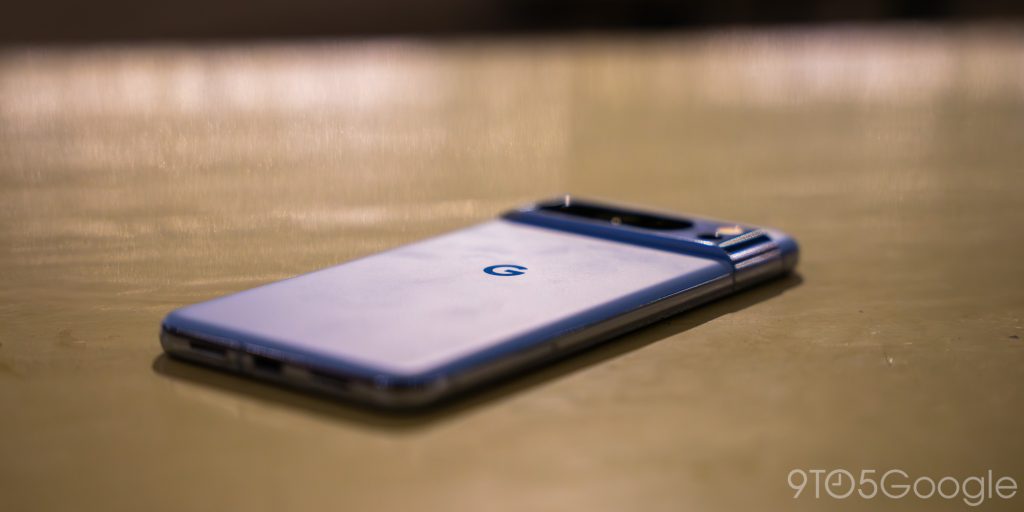
Battery life & charging
On par with any other modern flagship
Something that Google has always struggled with on Pixel phones is battery life, which can vary wildly from user to user. In my testing so far on Pixel 8 Pro, Google isn’t exactly making drastic steps here, but it’s also not getting worse.
Generally speaking, the 5,050 mAh battery in Pixel 8 Pro has been enough for about a day of use.
My average day runs from around 8 a.m. to 11 p.m., give or take, with lots of messaging, social media, and other tasks thrown in throughout the day, mostly but not entirely on Wi-Fi. On Pixel 8 Pro, I’ve been able to comfortably get to about 4-5 hours of screen time in that use and about 25% left by bedtime.
Heavier days when I’m out more have also been well within my expectations. A Saturday spent outdoors brought me up to around four hours of screen time with about 15% left by bedtime.. a very busy Sunday running from 6 a.m. to 1 a.m. with lots of photography and videos, messaging, maps, social media, browsing, and more left me with around 5.5 hours of screen time and 30% left by bedtime, but that also included about 15 minutes on a USB-C charger after the battery dipped to 25% by 5 p.m. and about 25 more minutes on a wireless charger while running Android Auto wirelessly. It’s one of the heaviest days I’ve put a smartphone through in a while, and I’ve got to say, I’m pleased overall with how the Pixel held up.
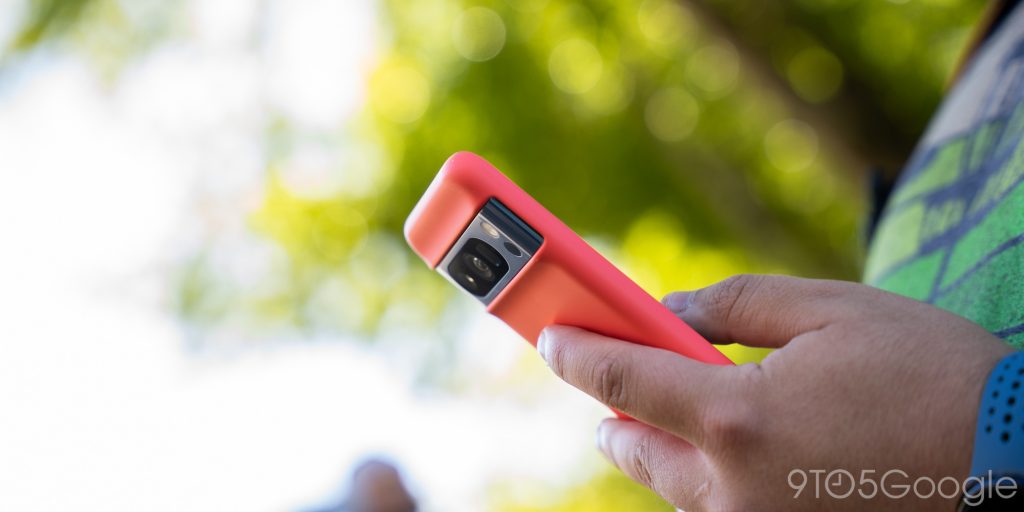
The Pixel 8 Pro by no means has even remotely the best battery life on a smartphone right now. I think the Galaxy Z Fold 5, OnePlus 11, and Galaxy S23 Ultra all beat it out on the Android side of things. But, I do think Google is at least in the same ballpark as Apple right now. I don’t have an iPhone 15 Pro Max to compare, but the results I saw this week on the Pixel 8 Pro felt pretty close to what I was seeing on my iPhone 15 Pro. In my eyes, that’s an overall win.
Charging speeds won’t exactly blow you away, either. Pixel 8 Pro tops out at 30W, up from 22W last year, which is fine. I’ve never felt like this is slow, but it’s also not crazy fast like you see in a device from OnePlus. Nine times out of ten, though, I’m usually charging via Qi on the Pixel Stand 2.
Camera
The Pixel legacy continues
Google Pixel phones have staked their legacy mainly on the camera, and not to beat around the bush, that legacy just continues to get better. But this year’s focus is clearly on AI over all else.
To start, let’s talk about the basics.
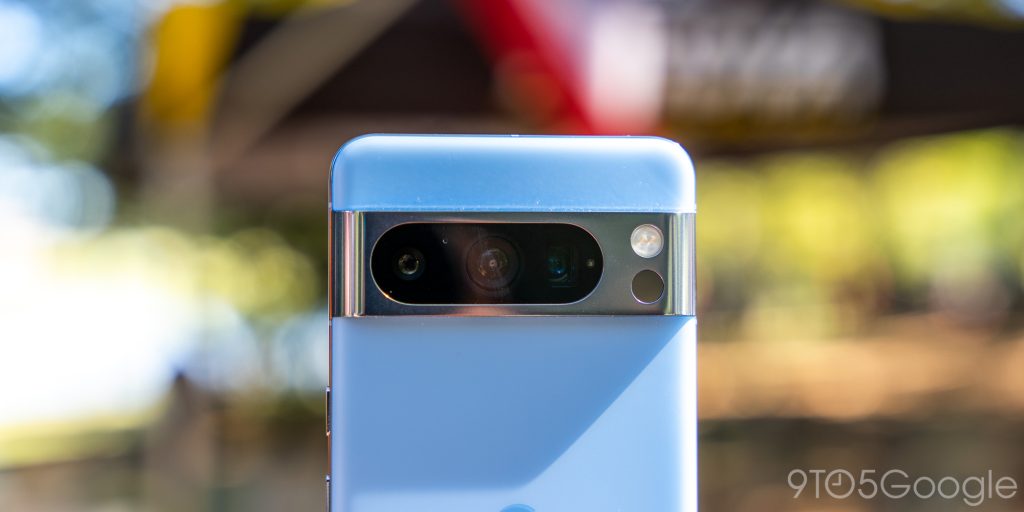
The updated 50 MP main sensor isn’t all that different from last year, and the results are still absolutely stunning. Google isn’t breaking any new ground here. The average shot feels, for the most part, about equal to what I was getting on last year’s Pixel 7 Pro.
New features on the Pixel 8 Pro include the option to shoot in “High-Res,” which turns off pixel binning and exports a 50 MP image. This results in better fine details, but it’s often a bit of a struggle to handle camera shake. It also means you’ll be eating up a lot more storage, whether that’s on the phone itself or on Google Photos. It is something I appreciated a lot more than I expected, though.
Google is also adding “Ultra HDR” this year, which provides a noticeable pop to pictures, at least when you view them in Google Photos, but unfortunately, we can’t show them here on our website. You can, however, view our full-size samples on Google Photos, and any supported devices will give you the full HDR experience.
The new 48 MP ultrawide sensor is also solid, though I can’t say I’ve noticed too much of a difference. I’m not much of an ultrawide guy anyway, though.
What remains my favorite part of Google’s camera hardware suite is the 5x telephoto, which is capable of some truly stunning shots. I had the pleasure of putting the Pixel 8 Pro’s camera through its paces during the US Disc Golf Championship this past weekend, and the 5x lens came in handy for getting in closer to get shots.
Another new feature on the Pixel 8 Pro is support for manual controls. You can now adjust shutter speed, ISO, and focus to your heart’s desire, which is certainly handy for occasional tricky shots. That said, I think this somewhat defeats the purpose of the Pixel camera, which is so good because the computational side of it is so trustworthy. But, really, there’s no harm in adding this – only benefits.

Video is also extremely solid on the Pixel 8 Pro but still not hard to trip up. If I captured video from the main lens, it was generally very good and I had no complaints. However, when moving to the telephoto lens, I often felt like focus could drift off of the subject easily, and I had a lot of trouble with jarring movements at anything over 10x. Overall, though, I remain quite happy with the Pixel video experience, and I can’t wait to try out “Video Boost” later this year to see how it makes further improvements.
One last thing I will add is that, both in video and photos, Google has done a great job in smoothing out the experience of switching lenses. It’s still not perfect, but it’s also not at all bad. The most jarring change is usually just when the feed turns over to a new lens, with a difference in quality noticeable especially when zooming in quickly.
Did you know this camera had AI?
But the real focus, as mentioned, is on AI features that come in after the shot has been taken.
That includes some longtime Pixel AI features, such as Top Shot and facial recognition, as well as Real Tone, which can also help adjust skin tones in video this year.
The headliner is Best Take, which can detect multiple photos that were shot around the same time and of the same people and use AI to replace faces to create the group shot you actually wanted.
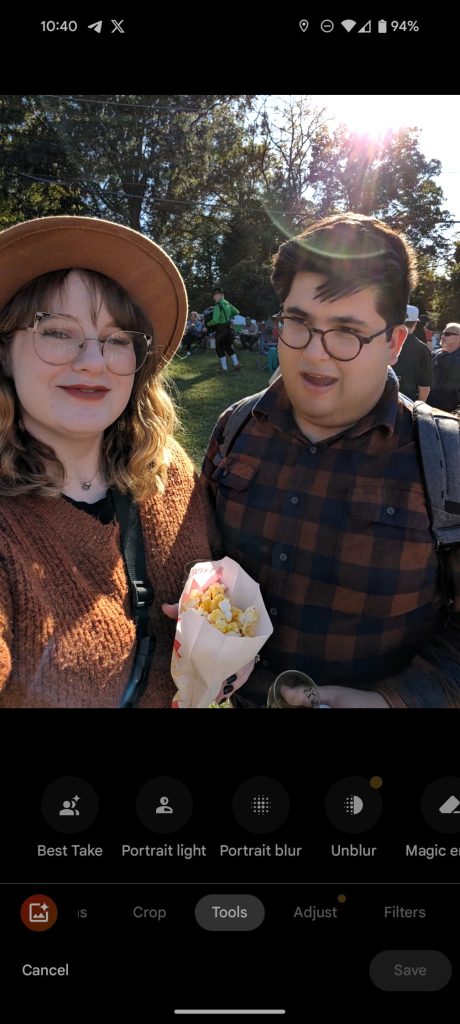

While this feature makes some folks uncomfortable, I think it’s going to be a huge point of attraction for families. Really, I just compare it to a good wedding photographer. Taking multiple shots means you can fix mistakes, and any good wedding photographer has probably pulled this exact trick without you knowing it. The Pixel can just help you do it now, and a whole lot faster.
The results, though, tend to be a mixed bag.
As people move their heads, their bodies also move, which can make some face replacements look a little unnatural. This is mainly a problem if the subjects move between shots. Burst mode can go a long way to fix this, but that also slightly defeats the purpose. That said, if you never saw the original, you’d be hard-pressed to actually notice if a shot was edited with Best Take. And, sometimes, the AI just can’t fix the shot, resulting in some weird artifacting.
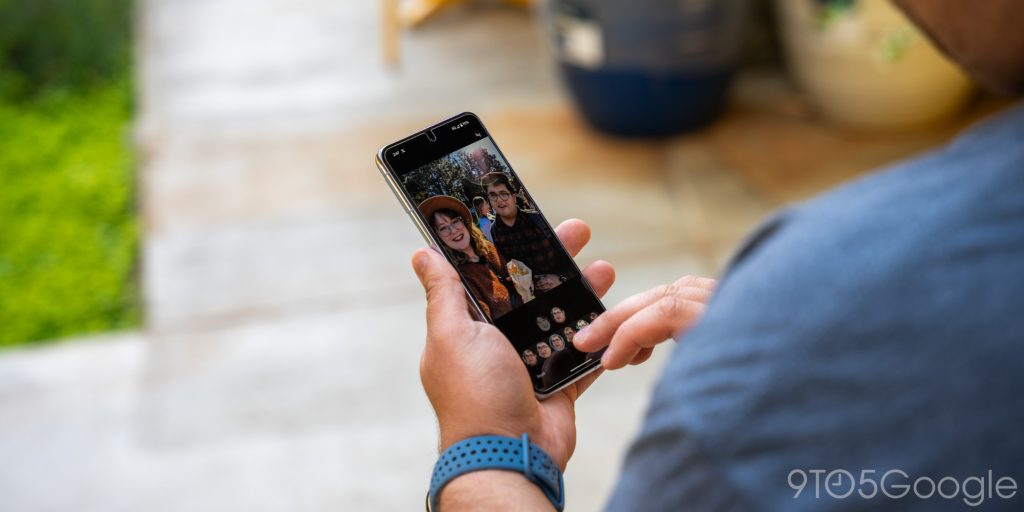
Magic Editor is Google’s other big flashy feature and, honestly, I just don’t get it. The pitch here is basically AI-powered Photoshop, but on your phone. And that’s a good pitch. But the implementation leaves a lot to be desired. The UI just tells you to circle the object you want to interact with, but fails to give you any further control. Google has mentioned changing the sky on a few occasions, but the generative AI just does it on its own. You have little to no control over what the results are.
But, beyond that, I just didn’t find myself wanting to use this. Some of Google’s demos, like moving someone further into the frame, seem useful, but everything else just seems like a party trick, or something better handled by other tools. Half the time, it feels like Magic Editor just wants to be Magic Eraser, and it’s not like it’s any better at that job. Magic Editor feels like a solution to an obvious problem, but a solution that skips a lot of the steps in between.

There are also new AI features in video, such as Audio Eraser. This allows you to effectively mute other sounds in your video that aren’t the focus of the clip. And it works rather well, as least from my very limited testing. More to come on that when this review gets finalized in the weeks to come.
The selfie camera is a big step up
On a hardware level, Google is really stepping up the selfie camera on Pixel 8 Pro. The 10.5 MP sensor now has autofocus, a feature that’s been revived five years after it first showed up on 2018’s Pixel 3 series. The quality of the camera feels much better as a result, at least in the main camera app, but 9to5Google’s resident selfie camera expert, Max Weinbach says that third-party apps have taken a hit.
Max explains:
The selfie camera on the Pixel 8 is a good improvement over the Pixel 7; it fixes the issues with a fixed focal length while keeping the quality of a Pixel camera. The issue remains in lower than perfect lighting and third party apps. In lower than perfect lighting there is a slight dark tint.
Year over year, the quality of Pixel selfie camera has decreased in apps like Snapchat, Instagram, and TikTok. Rather than getting pictures that look like they’re from the default camera app, like we saw from Pixel 2-4, it now looks like any other Android phone. This is likely due to Snapchat tuning for performance rather than quality, but still ends up with a not appealing end result. It’s inconsistent, but if you’re outside on a nice day, you can almost assume every shot will be great.
That new selfie camera is also being used for better Face Unlock, which this year works with payment apps. You can see more about that in our initial review of the smaller Pixel 8.
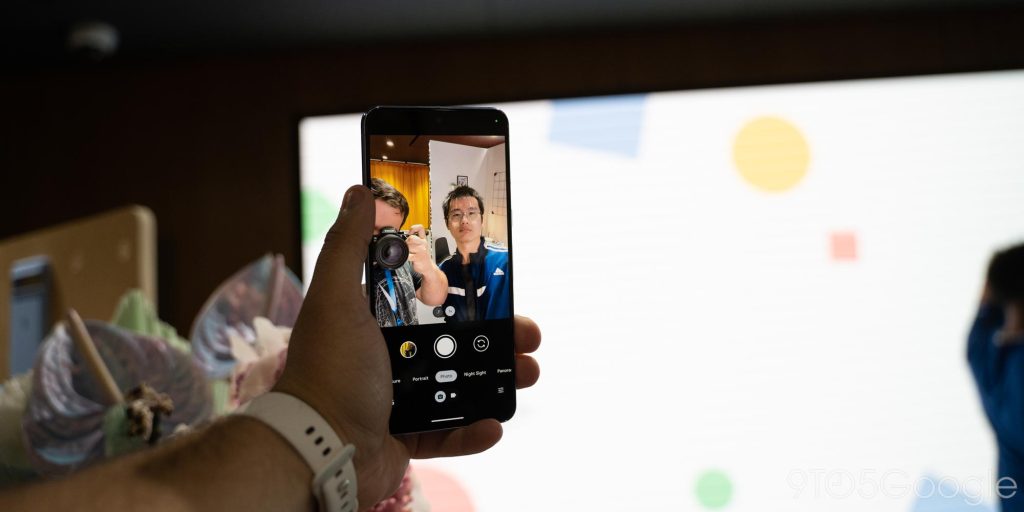
Tidbits
Fingerprint sensor & Face Unlock
The fingerprint sensor hardware on Pixel 8 Pro is unchanged from the Pixel 7 Pro and feels roughly the same. I’ve noticed maybe a 10% boost in accuracy, but the speed feels identical (both through screen protectors). In my eyes, it’s fine. I’d rather see Google move over to an ultrasonic sensor like Samsung uses, or at least get closer to OnePlus when it comes to speed, but it hasn’t taken any enjoyment out of my experience. Your results, of course, may vary because that’s just how things have gone with Pixel fingerprint sensors.
On the other hand, there’s Face Unlock. As mentioned, Abner Li took a closer look at this in our Pixel 8 review, but the short story is this. Face Unlock is a welcome addition, and it’s definitely better on Pixel 8 Pro than it was during the Pixel 7 generation. The best part of the whole system is that you can run face and fingerprint in parallel because, when acting as each other’s redundancies, the unlocking experience feels pretty much instant.
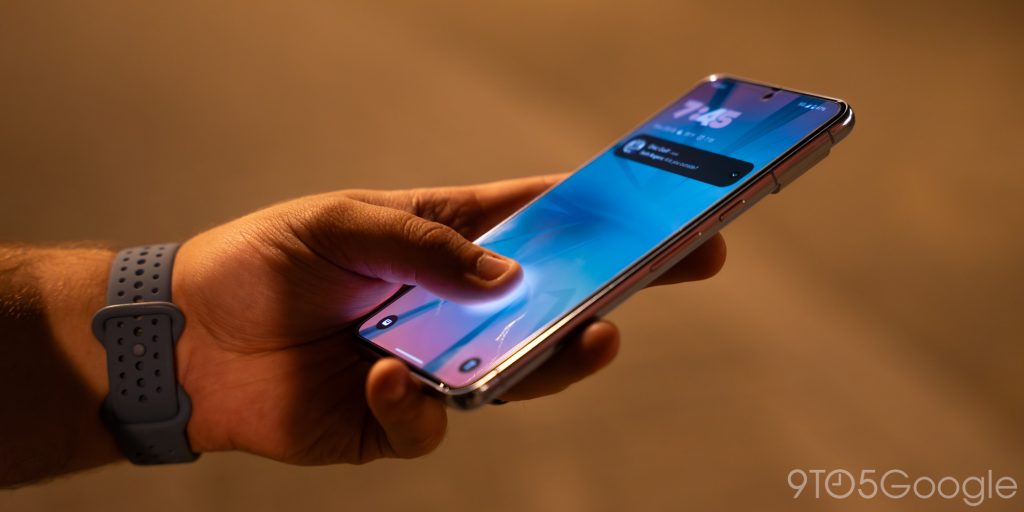
Haptics
The vibrations on Pixel 8 Pro also feel roughly identical to the Pixel 7 Pro, which is to say they’re pretty solid. The haptic motors feel tight and precise, and the Pixel version of Android 14 does a good job in showing off those motors. Just don’t go in expecting any improvements here. And, since I have a point of context in the iPhone 15 Pro, I do think Apple’s haptics are stronger, but not inherently better than what Google is using.
Signal performance
And then there’s the signal performance. Cellular connections have been a major pain point of Pixel phones powered by Tensor, and that’s largely due to using Samsung modems. Pixel 8 Pro continues with a Samsung modem, the Exynos 5300. The firmware on that modem has reportedly been updated (the review has been updated to correct that only firmware has changed) from when it debuted on Tensor G2, and in theory, the hardware and software both should be more mature, given the Pixel 7 series was running that modem before Samsung formally released it.
The short version here after six days of use is that the signal is mostly fine. Connection strength was as expected in all of my normal areas, and I was getting solid speeds on Verizon’s C-Band while at the US Disc Golf Championship at Winthrop University in Rock Hill, SC. That faster connection didn’t seem to push the modem to generate more heat or suck up more power, either, a flaw I’ve noticed in the past. In more rural areas, the same applied, but I wasn’t able to do any side-by-side testing of actual signal strength and speed.
We’re hoping to do that test in the weeks to come, much like we did on Google Tensor G2, so stay tuned!
The thermometer is kind of stupid
There’s one thing about the Pixel 8 Pro we’ve not talked about thus far, and it’s the built-in thermometer. The reason we haven’t talked about it is because, well, it’s pretty dumb in its current form.
The infrared thermometer can quickly grab the surface temperature of nearby objects through a simple app. It does work rather well, but, honestly, I just cannot even begin to understand the point of it. Google has pitched the idea on multiple occasions of using the sensor to see the temperature of a pan on the stove, which is something I’ve literally never had the impulse to do or have even heard of someone trying to do. I tried it, just for fun, and yeah, it works. However, I have no idea what to do with that information. Have you ever heard of a recipe saying to heat your pan to 300 degrees? I sure haven’t. Measuring my pan to learn it’s 227 degrees isn’t helpful information without context.

Another use case was the temperature of a baby bottle, which is a decent idea, but the 2-inch distance for an accurate temperature makes that one seem a little tough in practice.
Honestly, I can’t think of a single genuinely useful application of this feature. It’s a neat party trick that I’m sure will come in handy for someone out there, but if this survives to the Pixel 9 Pro, I’d be absolutely shocked.
Google is working to get FDA clearance to use this for getting the temperature of the human body, but even that seems like an insanely niche use case. I guess it might be kind of nice to have a body thermometer just on hand, but I think the added cost of the sensor in the phone outweighs its usefulness. As 9to5’s Seth Weintraub says, it’s absolutely a gimmick, and this slot would have been better used by a Flir-style heat mapping camera, or just using a 3D LiDAR camera like Apple’s Pro phones use.
For me, if we’re going to get a kind of pointless gimmick, I’d rather just see Google bring back the IR blaster instead. At least that could come in handy from time to time.
The verdict, so far
It sounds like a cliche at this point, but the Pixel 8 Pro is genuinely Google’s best phone yet and the culmination of the entire Pixel series thus far.
It takes the camera and AI legacy of the first few Pixel phones and mixes that with the improved hardware that’s come from everything after the Tensor reboot, as well as finally (probably, maybe, hopefully) getting that chip right. Throw in that the Pixel ecosystem is getting much stronger and that this phone is potentially going to have better resale value thanks to its seven-year update promise, and you’ve got a pretty compelling device in my opinion.
I’ve enjoyed every minute with the Pixel 8 Pro so far, and I can’t wait to keep running it daily. I don’t think anyone who picks up a Pixel 8 Pro will regret it.
Top comment by Jason
I received my Pro 8 and Watch 2 a few hours ago so I am still playing around but there are a few things I disagree about.
Magic Editor's erase feature is quite a bit better than Magic Eraser in my use so far. Also, in my opinion the fingerprint scanner is better than the Pro 7. I have yet had it fail on me unlike the 7 which failed all the time.
And one more thing. Not sure why Best Take has people freaked out. Its not like people have not been doing stuff like this with Photoshop and other editors. Photos have been manipulated for decades. Google is just making it easier for people to do it.
I must say so far I am impressed. This may be the first Pixel I actually keep and use especially since this year I found no reason to upgrade my iPhone 14 Pro. And so far I am really liking the watch too. I say good job Google.
Pixel 8 Pro is the biggest leap Google has taken in smartphones since the first Pixel device, and really for the first time in years, this is a device that feels like it’s not just waiting on a better future but is ready for customers today.
Folks, it’s all coming together.
Where to buy the Pixel 8 Pro
You can buy the Google Pixel 8 Pro from most major retailers and carriers in the US. Below, we’ve linked some of the main places to buy. And, if you’re buying before October 12, you can take advantage of getting a free Pixel Watch 2.
- Google Store
- Amazon
- Best Buy (Free Pixel Watch 2 + up to $800 trade-in)
- Verizon (Free with trade-in + free Pixel Watch 2)
- AT&T (Free with trade-in)
- T-Mobile
- Google Fi ($400 off for existing subscribers)
- Spectrum Mobile
- Mint Mobile ($170 off + free service)
- Visible
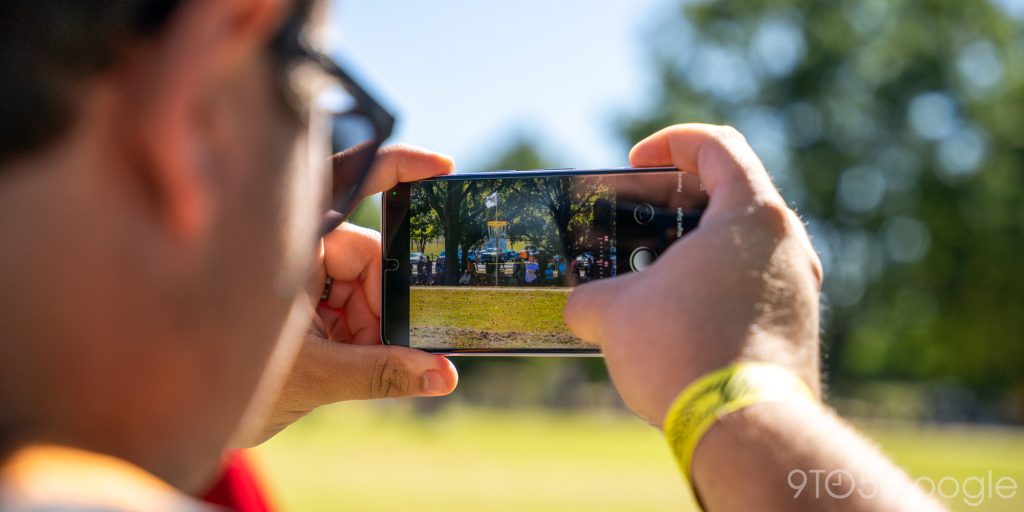
Andrew Romero, Max Weinbach, and Seth Weintraub contributed to this review.
FTC: We use income earning auto affiliate links. More.





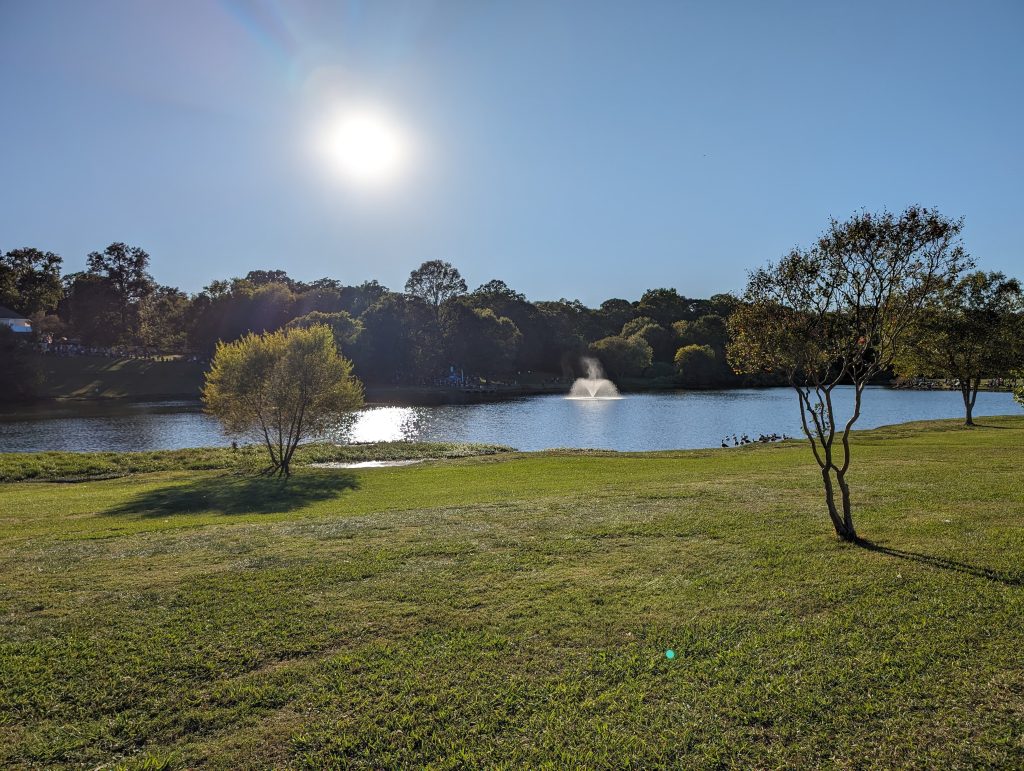

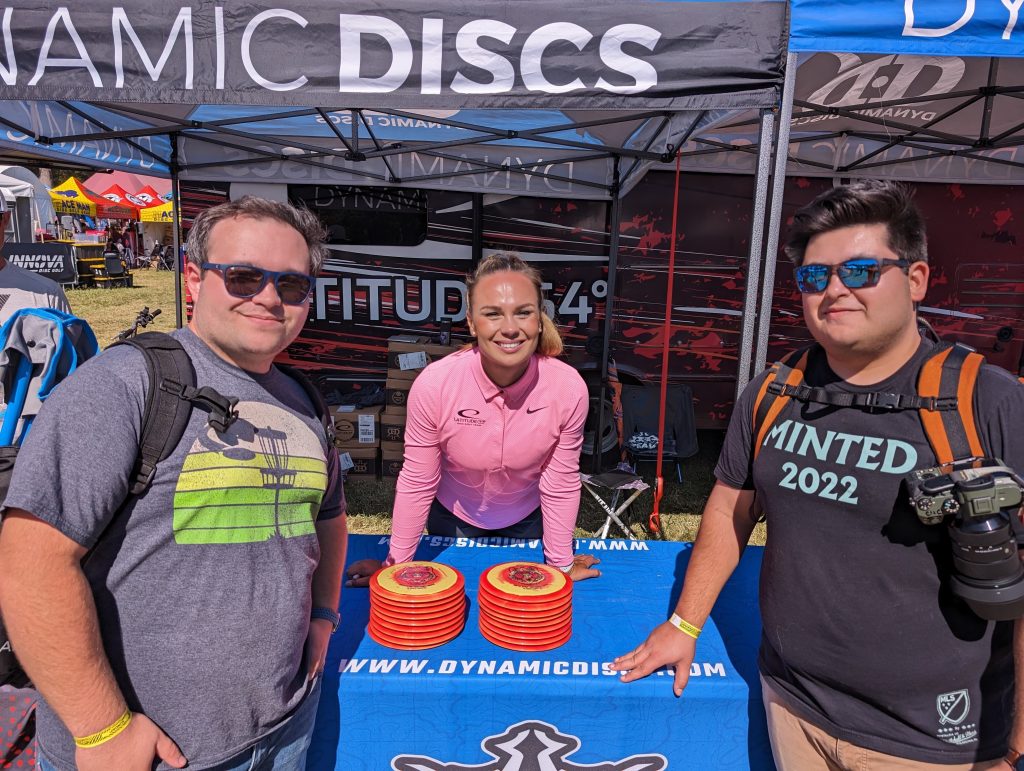
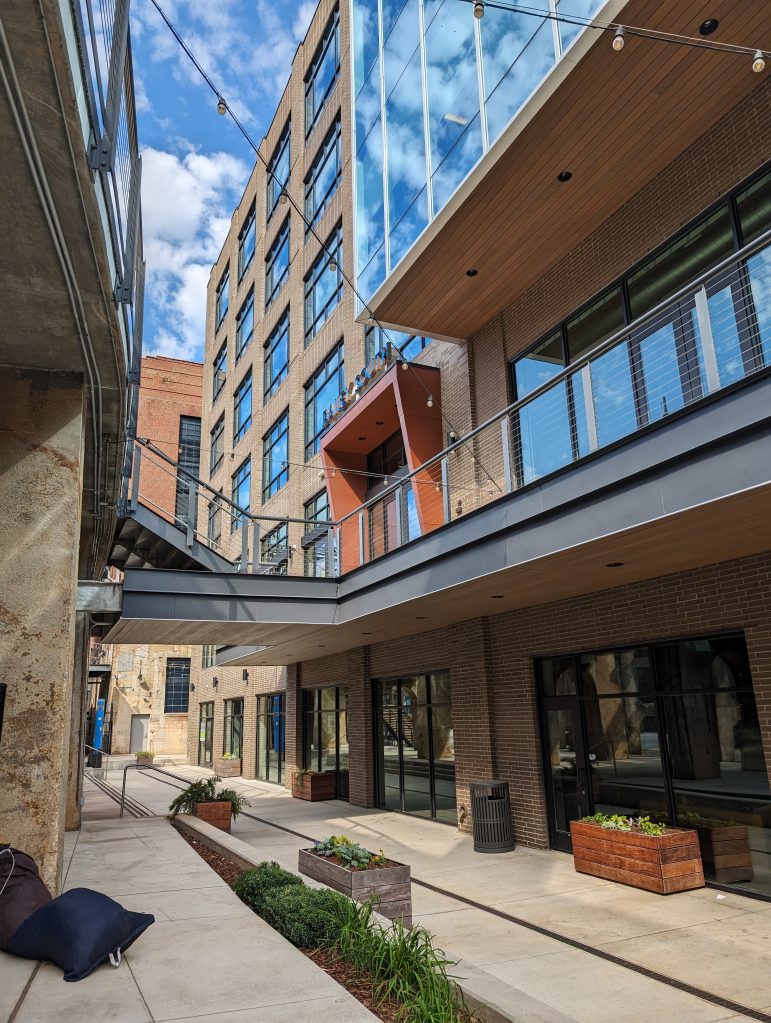
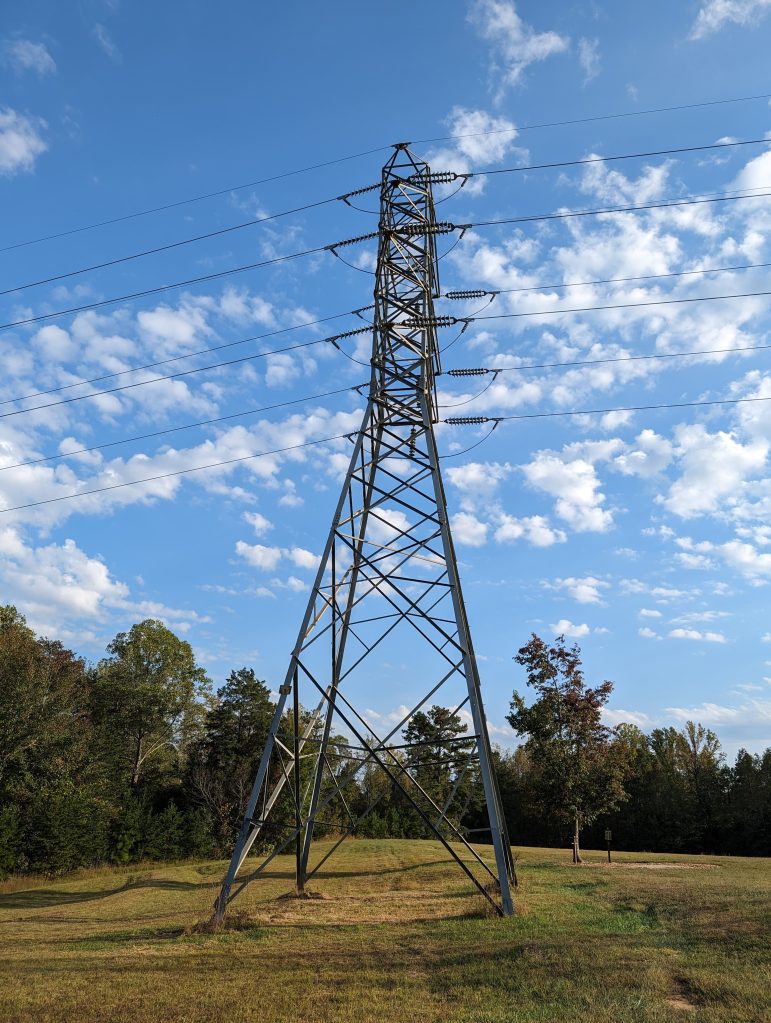


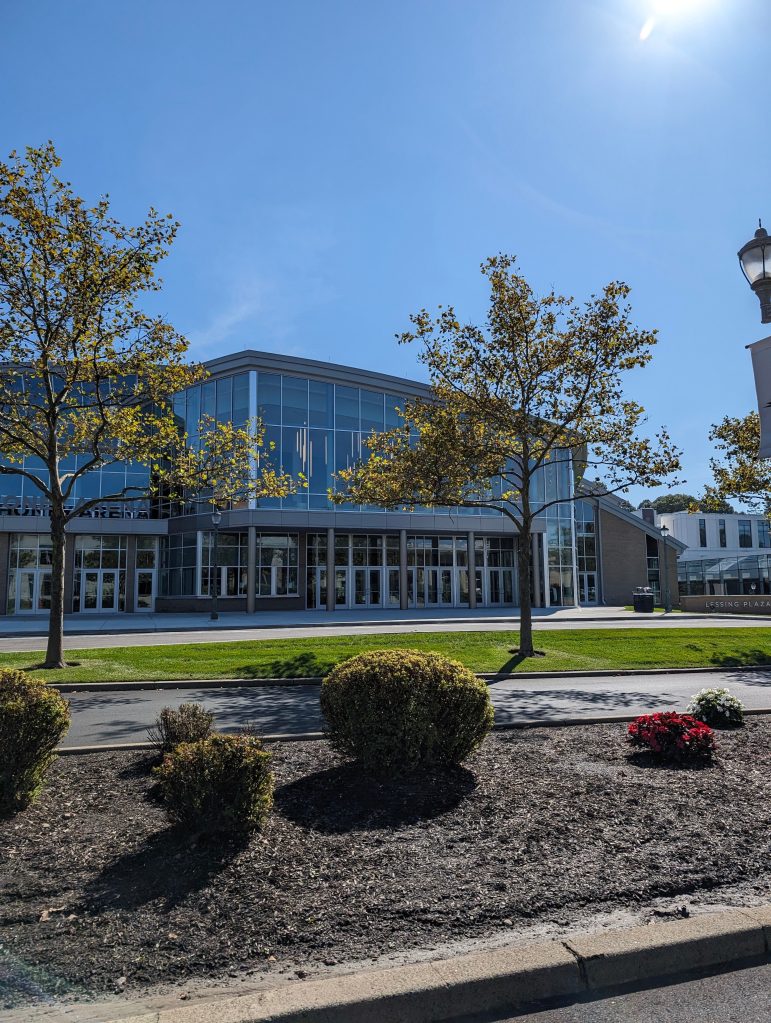





Comments